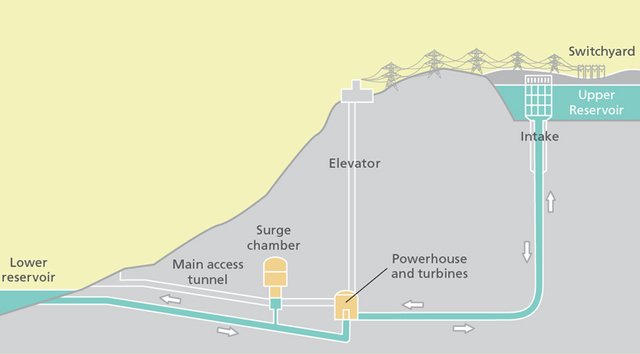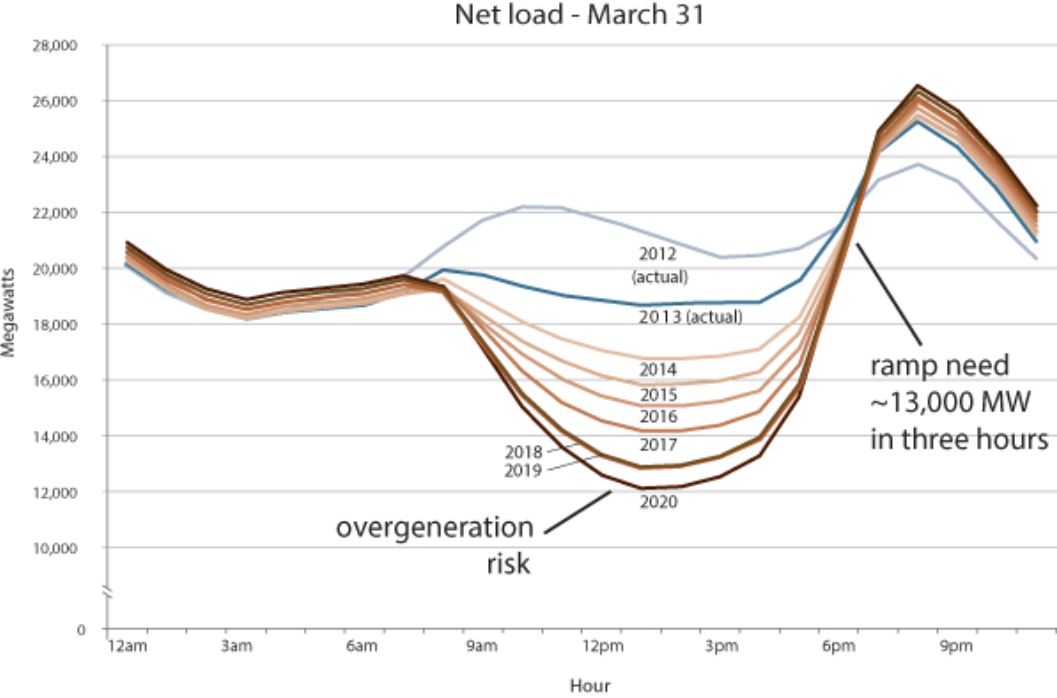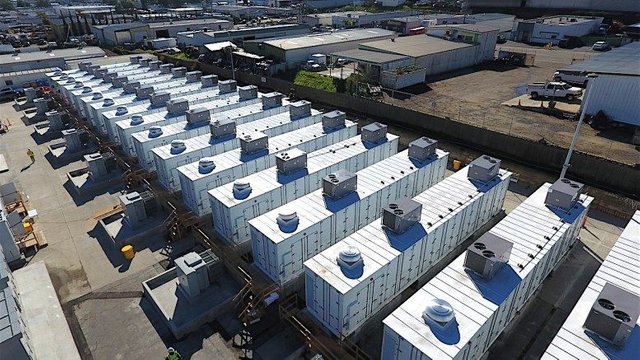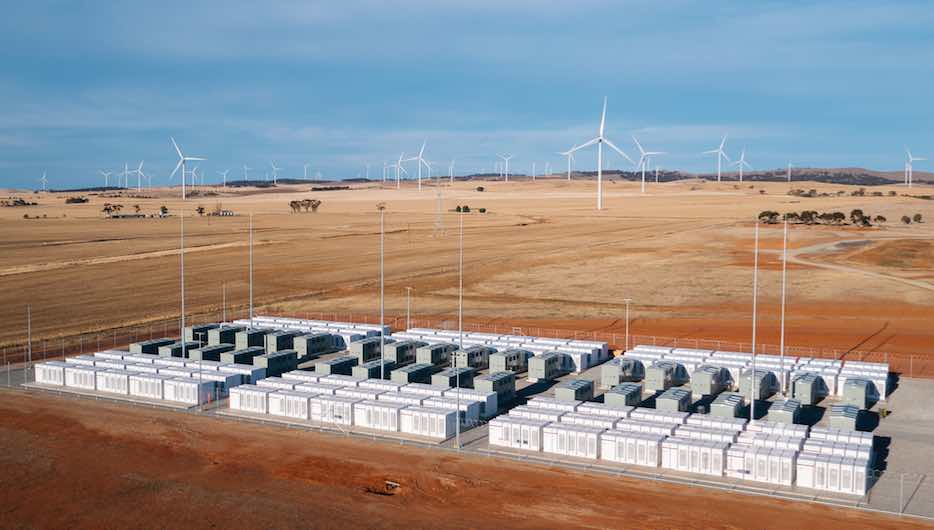Fundamentals of the Electricity Revolution - Part 2: The role of Energy Storage
In Part 1 of this series we introduced the concept of a coming revolution in the electricity sector and identified three technologies that will be taking center stage. In this post we take a closer look at the first of these technologies - Energy Storage.
Background
Energy storage is a concept that humans have valued immensely since the discovery of electricity. This is because electricity is intrinsically an instantaneous phenomenon. Once electricity is created, it must be used instantly for it to do useful work. Otherwise it will dissipate and be lost forever!
How do we ensure that we always generate enough power to cover varying demand when our generators can't vary their output quickly? The answer has always been to burn extra fuel in power stations to provide a buffer. And herein lies the problem. We waste incredible amounts of energy to ensure a stable electricity supply.
If only electricity could be effectively stored so it would be available on demand.
We already have batteries, don't we?
Well, yes, but...
Rechargeable battery energy storage (BES) has been around since 1859 when french Physicist, Gaston Planté invented the lead–acid battery. BES works by converting electricity into chemical energy - a form of energy that stays around a lot longer than electricity. The BES then re-converts the chemical energy into electricity when it is needed.
BES comes in many different chemistries, each having pros, cons and optimal use cases. Compared to other forms of energy storage, BES technologies are flexible in their design and their range of deployment. For example, different forms of BES are used on satellites, in mobile phones and in hearing aids. New technologies and manufacturing processes continue to increase performance, durability and decrease costs.
Despite this, their use has been limited to special-cases where their high costs can be justified, for example:
- People are sufficiently inconvenienced by manually cranking their car that they are happy to pay for the installation & maintenance of a starter battery.
- Data centers transact such business-critical applications, that their customers are happy to pay for BES to ensure an uninterruptible power supply in case of a grid outage.
- Laptops and mobile phones, by their fundamental purpose, require BES. But because the high cost was built into these products prices from day 1, consumer expectations were set.
These are niches, specific to value added applications or human convenience.
On the grid, cost effective energy storage has been implemented, but again, only as a niche - this time in rare cases where geography allows. Pumped-hydro energy storage systems use excess grid generation capacity at night time to power pumps that move water to a higher altitude reservoir. They then capture the potential energy of the water in the day time, by releasing it to drive turbines.

Concept of pumped hydro energy storage (Image)
The fact that it can be cheaper to engineer these massive projects, rather than ramping power stations to meet macro load variations, illustrates the enormous challenges that grid operators face. But Pumped hydro can't be used anywhere. The grid needs BES!
Grid challenges escalate as renewable energy grows
With the recent growth of grid-connected renewable energy (RE) generation and its intermittent nature, the challenges faced by grid operators are now being multiplied.
While solar and wind generation is desirable because they are clean and can generate electricity for less cost than traditional power stations, their intermittent nature means that they are not fit for purpose as a standalone power solution. In fact they are only enabled due to the scale and quality of the grid infrastructure that they connect to. The grid pays a hefty price.
For example, the peak to off-peak variation in net load on traditional generation has been exaggerated in regions that have significant solar PV capacities. This is because solar only generates during sunlight hours - typically not peak load periods. This has led to the coining of the term 'Duck Curve' to describe the net grid load after solar generation has been accounted for.

The evolution of the duck curve due to increasing solar capacity in California. Courtesy of California ISO (Image)
In some regions, RE penetration is so high that more electricity is pumped into the grid than it can handle, resulting in a condition called over-voltage. The grid must respond by curtailing production to remove excess energy or risk damaging its infrastructure. So we see situations where renewable energy power plants are paid to not generate!
On top of this we have the short-term frequency instability introduced to the grid when clouds move across solar PV plants, or gusts of wind rapidly alter the output of wind plants.
All of these issues are driving regulation towards 'RE firming'. This means that the raw intermittent output of a solar or wind plant must be converted to one that stays within specified margins so that grid operators can better manage their network.
While battery energy storage (BES) can technically achieve this, up until now it has been cost prohibitive - so we have started to see renewable energy capacity growth slowing in the most RE-saturated markets.
Energy Storage as a Commodity
Now we are at the point where if we are to continue to embrace renewable energy generation, BES must become cheap and ubiquitous enough to be deployed anywhere. These are features of a commodity.
The long term challenge is to find energy storage solutions that can enable on-demand RE to the grid for less than the cost of a traditional power plants. This is seen as the holy grail of our transition to a fully renewable electricity grid.
To this end the past decade has seen investments in countless energy storage technologies and chemistries and we are starting to reap the rewards today. We are now seeing the emergence of a number of technologies that are commercially viable and that are building grid-scale track record.

This AES Lithium-ion system, with a capacity of 120 MWh, is connected to San Diego Gas & Electric in Escondido, California (Image)
Storing energy is just the baseline
While shifting energy to other times of the day and smoothing fluctuations is the bread and butter of grid BES', they also offer an array of additional services that can be utilised in different applications.
One of the most important features of BES is the near-instantaneous reaction time due to the fact that the power converters used to connect to the grid, have zero inertia. This means that they can replicate and regulate the exact frequency of the grid in real time without the long ramp times associated with overcoming torque inertia faced by spinning generators. Frequency regulation markets offer compensation for these services.
Another big one is spinning reserves. Generation companies must keep a certain proportion of their spare capacity 'spinning' so that it can come online quickly if certain conditions require. Grid-connected BES systems can be configured to continuously provide 'spinning reserves' without wasting any fuel.
Multiple services can also be provided by a single BES asset - the industry calls this 'stacking services'. This enables the business case for grid-connected BES to be optimised beyond simple arbitrage revenue streams.

This Tesla Lithium-ion system, with a capacity of 129 MWh, is used to stabilise the high RE penetration grid in South Australia and to provide back-up (Image)
Unlimited opportunities but a high state of flux
The roll out of BES technology is going to be the catalyst for a series of transformations that will be truly revolutionary.
Firstly, by removing the RE penetration bottleneck, there is a road map towards 100% renewable grids. Secondly, in deregulated markets, BES will transform distributed energy resources into autonomous assets that are able to provide a full suite of services to grid operators and consumers. And thirdly, grid topology will begin to evolve from centralised to distributed as energy storage also becomes the go to option for network upgrades.
For organisations and consumers looking leverage from the energy storage boom, the challenges typically surround the immaturity of the sector, general lack of knowledge and the high state of flux. Developers and investors looking to implement BES projects might well ask the following questions:
- Which technology & supplier is right for our application & environment?
- What are the effects of local policy and regulation on the project over its lifetime?
- How can BES procurement be managed effectively?
- How can we integrate BES costs into our project financial modelling?
- How can we maximise the return on investment for a BES asset?
- How can we utilise BES assets to participate in various energy markets as they evolve?
- What are the risks associated with BES asset ownership & operation and how can they be managed over its lifetime?
For these questions and more, Rynergy is here to help. Find out more at rynergy.net
Part 3 of this series will look into the role of grid intelligence technologies in the electricity revolution. Stay tuned.
Congratulations @rynergy! You have completed some achievement on Steemit and have been rewarded with new badge(s) :
Click on any badge to view your own Board of Honor on SteemitBoard.
For more information about SteemitBoard, click here
If you no longer want to receive notifications, reply to this comment with the word
STOPBatteries or energy maker devices more important than others
Hello, not sure I understand. is that a question?
@OriginalWorks
The @OriginalWorks bot has determined this post by @rynergy to be original material and upvoted it!
To call @OriginalWorks, simply reply to any post with @originalworks or !originalworks in your message!
This post received a 0.840 SBD (13.04%) upvote from @upvotewhale thanks to @rynergy! For more information, check out my profile!
I really enjoyed this read on BES tech and renewable energy power plants. Thank you!
Hi !!
Nice to meet you! We are currently trying to create a Steemit community for fellow Singaporeans.
Inspired by what other countries had done (teamaustralia, teammalaysia, etc), a community will help Singapore Steemians to grow together. We can share ideas, collaborate efforts and learn from each other.
If you are interested, feel free to join this newly created Facebook group and unite together! https://www.facebook.com/groups/steemsingapore/
Hope to see you participate in this community! #teamsingapore
Hi there, I am not on facebook but happy to contribute the the Singapore community on Steemit / Twitter
I will use the #teamsingapore tag.
Thanks!
Sure thing! Thanks for the support.